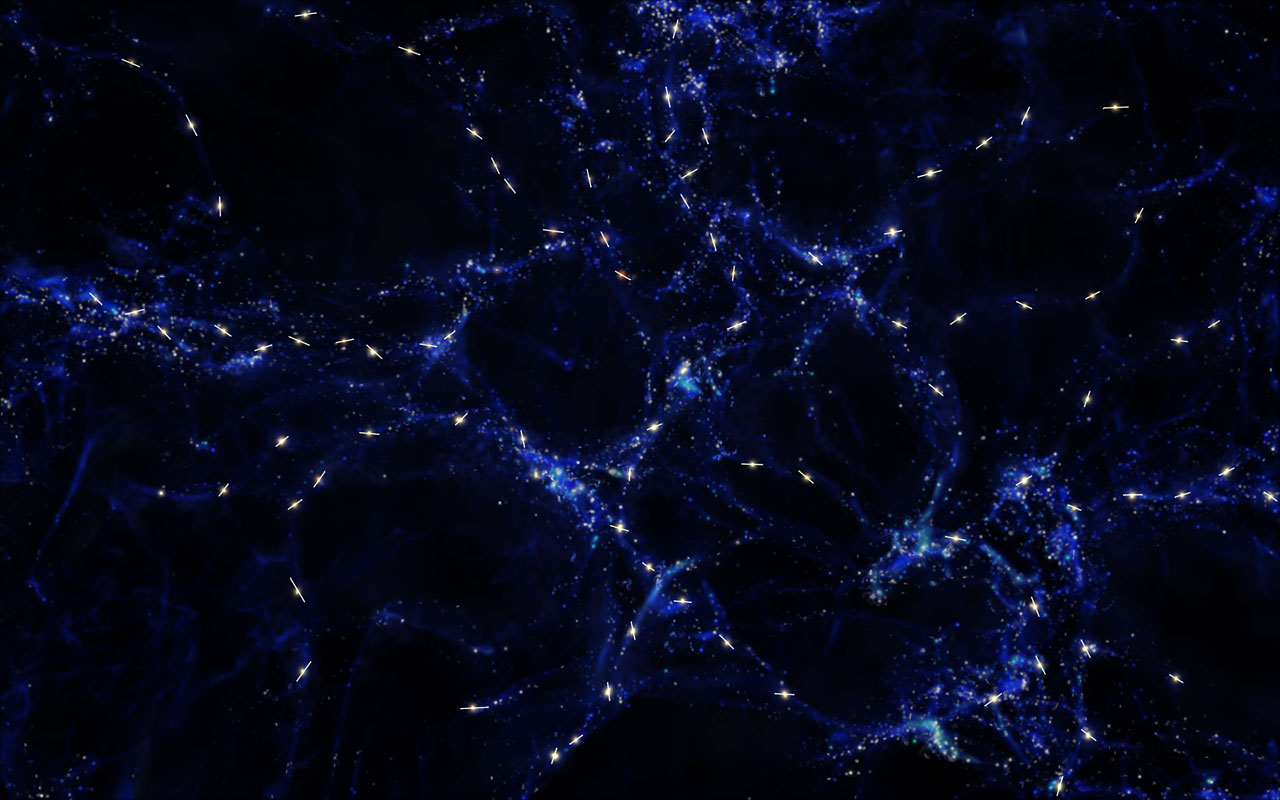
Researchers have discovered an entire cluster of galaxies in one of the last locations anyone would have thought to check. The previously-unseen cluster was hiding within the blinding light of the quasar at its center, an article in Science Daily stated.
A quasar is a supermassive black hole that gives off a lot of light. The one at the heart of the new cluster is called PKS1353-341. In addition to being just 2.4 billion light years from Earth, it is also incredibly bright, being 46 billion times brighter than the Sun.
Its proximity and brightness led researchers to believe that PKS1353-341 and the singular galaxy it routinely fed on were alone in their corner of the universe. It turns out that the quasar was actually surrounded by hundreds of separate galaxies, whose light were drowned out by the energy given off by the hungry supermassive black hole.
Massachusetts Institute of Technology (MIT) researchers theorized that the new cluster has a mass equal to 690 trillion solar masses. To give you an idea of how massive that is, our Milky Way is a single galaxy that masses just 400 billion suns. (Related: Understanding massive black hole formation: Researchers believe supersonic gas streams from the Big Bang may provide the answer.)
How many galaxy clusters are masquerading as quasars or active black holes?
The galaxy cluster surrounding PKS1353-341 was not the first secret found by MIT researcher Michael McDonald. In 2012, his team discovered Phoenix, which was even bigger and brighter than the currently unnamed cluster.
Phoenix was also located in an easily-observed part of the sky. Yet it somehow escaped the notice of astronomers for decades. McDonald attributed this to strong preconceptions regarding the signal of a galaxy cluster. A cluster was expected to give off dispersed amounts of X-ray energies. However, Phoenix gave off a bright and pointy signal attributed to black holes and quasars. This was due to a very active and powerful black hole at the core of the recently-discovered galaxy cluster.
Inspired by this discovery, McDonald formed a new team to conduct the Clusters Hiding in Plain Sight (CHiPS) stellar survey. They used the Magellan optical telescope in Chile to reevaluate very bright point sources of X-ray energies in the sky. If a point source was surrounded by more galaxies than normal, it could be part of a galaxy cluster. The CHiPS team would then use NASA's Chandra X-Ray Observatory to look for a diffused source of X-ray energy around the much more precise point source.
New star survey reports finding its first galaxy cluster around a bright quasar
In a paper published in Astrophysical Journal, the MIT team talked about the very first galaxy cluster they found hiding in plain sight. They noted that PKS1353-341 was much brighter than the typical supermassive black hole or quasar.
McDonald thinks that the unnatural brightness is caused by an ongoing feeding frenzy. Whenever a black hole devours something, the remnants of the victim form an accretion disc of bright plasma around the black hole. The more mass is consumed, the larger and more intense this disk becomes. McDonald has no idea how long PKS1353-341 will continue to give off so much light, or if it is the only quasar that is stuffing itself full of stars.
His team will be combing through more X-ray data in search of galaxy clusters that are hidden by brighter sources of light. Not only will further discoveries reveal more information about the feeding habits of black holes, but they could also shed more light on the ongoing expansion of the universe.
Would you like more stories about supermassive black holes that might be hiding galaxies? You can find them at Cosmic.news.
Sources include:
Please contact us for more information.





















